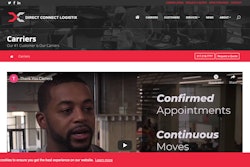In recent years, our industry has changed quite a bit with new regulations, new technologies, changes in freight flows and changes in response to the coronavirus pandemic. You’ve seen plenty of headlines on the driver shortage, equipment shortages and inflation. You’ve likely also seen headlines about exciting innovations in areas like autonomous trucks and alternative energy trucks.
Amid these high-profile disruptions, some significant grassroots changes have been overlooked. Have you noticed the huge increase in the number of independent truckers operating under their own authority? What’s going on with the big increase in the number of trailers? Have you heard about OTR truckload carriers paying their drivers by the hour, or even on salary?
More independent truckers with one truck and their own authority
In the past three years, FMCSA reports that the number of for-hire interstate carriers with a single truck has increased by 135,000 trucks (77%). In 2021 alone, the number increased by 85,000 trucks (39%).
By comparison, among the eight public truckload carriers that report the number of trucks in their fleet, there are only 51,000 trucks, and their truck count decreased slightly last year.
Skyrocketing spot market rates surely play an essential role in motivating individuals to take the leap away from the security of a company driving position to the risk and rewards of operating under their own authority. Company driver pay per mile has increased significantly recently, but not nearly as much as spot market rates.
But I think there’s more to this. While big carriers are consolidating, one-truck carriers are multiplying like rabbits. A lot of people prefer the freedom and independence of being their own boss. Look at the growth in the number of people driving for Uber, Lyft, DoorDash, Grubhub, and others. Trucking is not isolated from these market forces and worker preferences. For years now, companies have been striving to build apps to become the “Uber for Trucking.” It’s working. They’re succeeding.
What does this mean for trucking? Is it possible that the future of trucking could look like the lodging industry? Airbnb and Vrbo didn’t put Marriott and Hyatt out of business, but they are formidable competitors and are here to stay. Will the same be said of these one-truck companies fueled by “Uber for trucking” apps?
Trailers, Trailers, Trailers
Carriers are buying more and more trailers. Among the six public truckload carriers that report the number of trailers in their fleet, truck count decreased by 340 trucks last year but trailer count increased by 15,960 trailers. This increased their trailer to truck ratio by 12.5% to 3.54 trailers per truck.
The latest Operational Cost of Trucking report from ATRI also noted a sudden increase in the trailer to truck ratio to 2.9 after several years at 2.7 ratios and said, “The increase in trailers per truck may have several explanations, including the need for greater logistical flexibility within the industry as carriers attempt to mitigate the impact of detention and driver shortages with increased trailer capacity.”
Trailer pools and drop-and-hook shipping increase the utilization of scarce trucks and drivers. In many pricing models, carriers assume they need to model in at least one extra hour every time a stop is a live load/unload rather than a drop-and-hook. With a typical driver making between six and 10 stops every week, the time saved through drop-and-hook shipping is significant. In addition, drop-and-hook shipping allows for more flexible appointment windows, which further increases productivity per truck/driver.
I believe another key driver of the growth in trailers is related to the growth of one-truck carriers that I mentioned above. Power-only brokering lowers the barriers to entry for single-truck carriers while also increasing their efficiency/utilization and increasing the attractiveness of brokers with one-truck carriers to big shippers. Recently, Uber Freight, Convoy and FreightVana have announced power-only services. This joins the 360box program launched by JB Hunt in 2019 and power-only brokerage offerings from Schneider, Werner, and Knight-Swift.
In related news, XPO recently announced they were ramping up a program where they not only refurbish old trailers, but also build new trailers. XPO’s production of new trailers will double this year and increase by an additional 50-100% next year.
New paradigms for paying company drivers
In this competitive market where tens of thousands of drivers are getting their own authority, companies are having to compete more than ever to attract and retain great drivers. For years, OTR truckload drivers have been frustrated by the variabilities and inconsistencies of one-way trucking. Unpredictable loads lead to unpredictable paychecks and unpredictable home time.
I’m seeing more and more carriers respond to this frustration by paying drivers by the hour rather than by the mile. Some carriers are paying based on what drivers have logged in their electronic logs. Others are having drivers clock in and out on a separate time clock.
I’m especially interested in seeing what happens with carriers like Don Hummer Trucking that are offering salaried positions for OTR truckload drivers. In the case of Hummer, drivers receive a generous guaranteed salary every week and are guaranteed to be home by 2 p.m. on Friday before having to go back to work Sunday afternoon. These drivers can reliably commit to Friday night activities with friends and family, Saturday activities with their kids and Sunday morning church with their families. And their families no longer have to wonder how much money they will have this week based on what loads the driver is offered and when those loads empty. This is a game changer for OTR trucking.
For too long, drivers have carried an excessive burden when load-to-truck ratios decrease, when poor scheduling leads to poor velocity on loads, or when shippers and receivers tie them up for hours waiting to get loaded/unloaded. With the shift to hourly and salary pay, drivers are no longer expected to absorb all these inefficiencies. In addition to this leading to happier drivers with better retention, I’m sure it also leads to carriers who are much more productive now that they are carrying more of the cost of inefficiencies.
“It's tough to make predictions, especially about the future”
Baseball-playing philosopher Yogi Berra is credited with saying, “It’s tough to make predictions, especially about the future.” This is especially true of trucking today. There’s so much change coming at us all at once. Economic cycles and regulatory changes will always be disruptive. Soaring equipment and fuel prices, driver shortages and changing driver preferences create new challenges. Add to that the upcoming revolution in alternative energy vehicles and autonomous trucks and we have a perfect storm for disruptions much bigger than deregulation was a generation ago.
In this environment, it’s more important than ever before to stay informed, to take risks and to adjust quickly based on experience. We can’t perfectly predict the future, but we can proactively help create it. If we stick to old paradigms and business models we will be left behind. If you want to stay relevant and competitive in this industry, it’s time to invest in new ways of doing things.
Richard Stocking is the founder and CEO of DPX Consulting, a transportation consulting firm that helps fleets with strategic operational improvements and M&A activity. Prior to founding DPX Consulting, he enjoyed a 27-year career with Swift Transportation that began as an entry-level customer service representative and worked through various roles in sales and operations throughout the United States before becoming president and CEO. At the time of his departure, Swift Transportation had grown into the largest truckload carrier in North America with 18,000 trucks, 60,000 trailers, and $4.5 billion in annual revenues servicing the US, Mexico and Canada.












